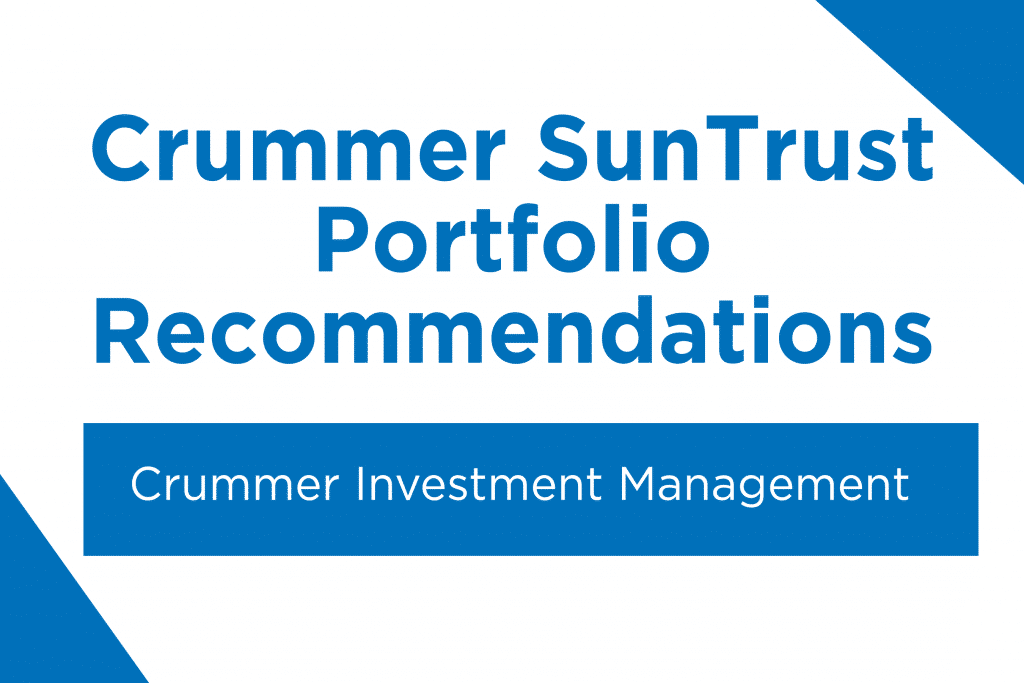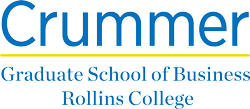Student Spotlight
Crummer Finance Students Adjust SunTrust Portfolio with ‘Cautious Optimism’

Crummer’s Managing Global Portfolios class, led by Dr. Koray Simsek, is projecting a rebound year for the economy as it readjusts the Crummer SunTrust Portfolio.
Following a whirlwind of a year that had Crummer finance students adjusting the SunTrust Portfolio on the fly as the COVID-19 pandemic started to spread across the world, projections are looking much more optimistic for the this coming year.
Crummer’s premier investment class, Managing Global Portfolios, provides students the opportunity to make real-world and socially responsible investment decisions, directing the trading executions of the Crummer SunTrust Portfolio.

The SunTrust Portfolio was established in 1999, endowed by SunTrust to provide scholarships to Crummer students and give current students a practical, hands-on learning opportunity. Since its inception, the Portfolio has generated over half a million dollars in scholarships, including $50,000 awarded for student scholarships in 2021.
Under the guidance of Crummer finance professor, Dr. Koray Simsek, the students spend the semester producing economic and capital market research to recommend investment decisions for the portfolio, which is subject to trading only one time per year.
At the culmination of the semester, the students present their recommendations to a distinguished group of community partners that also provides them advice and guidance throughout the semester.
With innovations in technology and healthcare leading the way, along with vaccine rollouts ramping up, Crummer’s top finance students made the recommendations with an air of cautious optimism for the near future.
The students took a tactical approach at the beginning of the course, starting with a top-down sector analysis. They established an economic forecast based on research and consultation with economists, including Crummer’s Associate Dean and Professor of Economics Dr. William Seyfried and Board of Overseers member Philip Rich ’78 ’86MBA of Seaside Bank.
With 11 students in the course this year, they were able to study 11 S&P 500 sectors and each choose two security selections from the following: Communication Services, Consumer Discretionary, Consumer Staples, Energy, Financials, Healthcare, Industrials, Information Technology, Materials, Real Estate, and Utilities.
The large number of picks this year (there were only 10 in 2020), lead to a riskier portfolio for 2021, but Dr. Koray Simsek says overall, he would not consider this a risky portfolio.
“The team found what they think are undervalued securities and tilted the portfolio towards those securities, but at the same time they managed an asset allocation that is slightly less risky than the over S&P 500 asset allocation,” he said.
Maintaining an allocation of funds to each sector’s ETF to ensure diversification, the team is looking to take advantage of post-pandemic growth with their picks.
“The main driver that led my team and I to have an optimistic outlook for the economy are the vaccines that are being administered all over the country,” said David Baldock, a student in the course. “That coupled with the fact that the economy suffered so much in 2020 serves as a lesson that we must learn to live with COVID for the time being, while also taking reasonable precautions.”
In addition to Baldock, students participating in the course included Louis-Francois Charpentier, Jacob Carroll, Austin Hieb, Ryan Abronski, Brandon Carlin, Eric NeCamp, Luiggi Reno, Jackson Pliska, Hannah Johnson, and Shawn Hudson.
Another integral aspect of Managing Global Portfolios is the theme of incorporating Environmental, Social and Governance (ESG) investing into the portfolio selection process. ESG investing is the idea of measuring the sustainability and societal impact of an investment in a firm.
The students in the course sought out companies that had better than average industry sector in terms of their ESG initiatives. The student’s picks had an ESG rating of 3.52 out of 5, while the S&P 500 holdings have a cap-weighted average of 3.25 out of 5.
“Our intent was not to maximize the ESG impact of our portfolio, but instead to tilt towards this factor,” the team wrote in their final report.
Finally, the students made sure this year’s allocations were directed with the long-term in mind, while simultaneously mindful of the portfolio’s commitment to provide scholarships for students in the short-term.
“This was absolutely my favorite class at Crummer and I have nothing to do other than brag about it. This experience was by far my most important experience at Crummer as it gave me and my teammates a real-world experience in managing our sectors of the portfolio,” said Baldock.
The Selections
- Comcast (CMCSA) – BUY
- Comcast’s diverse stream of operations provides many avenues for long-term success. Its cable division has been performing well, NBC is growing through digital streaming, and Sky’s European presence has the potential for more growth as it expands in other countries. The stock is currently undervalued, but the market should realize the importance of Comcast to the communications sector, as a leader in broadcasting and innovative content.
- Verizon (VZ) – BUY
- Verizon’s strategy of a more connected digital world through its 5G capabilities brings promise. Once the market realizes the growth potential of Verizon in relation to its competitors in the U.S., as well as their respectable ESG performance, the company should see a rise in its price.
- Service Corporation International (SCI) – BUY
- SCI’s strategy of providing quality services while proving its commitment to improve communities and the environment is a promising strategy that will lead to long-term sales growth.
- TJX Companies, Inc. (TJX) – BUY
- TJX’s strategy of digital expansion should lead to continued growth. Once its e-commerce platform expands, we expect the price to rise.
- Coca-Cola Company (KO) – HOLD
- Coca-Cola will come back from its current slump in sales. Management has shown their ability to control costs and will now apply these skills to areas with high growth. Their infrastructure is already in place worldwide to begin this process.
- Walmart, Inc. (WMT) – HOLD
- Walmart will remain America’s go-to for everyday prices and the impending future stimulus packages will again boost sales. In the long run, their online presence will chip away at Amazon’s current dominance.
- Canadian Natural Resources Limited (CNQ) – BUY
- Canadian Natural Resources strategy of diversifying its assets, returning capital to investors, and their continued investment into ESG practices should lead to growth. Once oil consumption begins to increase and investors realize CNQ’s ESG investment aids in their ability to outperform the industry, we predict the price to increase.
- Kinder Morgan, Inc. (KMI) – BUY
- Kinder Morgan’s focus on midstream energy and an already expansive network of pipelines and terminals illuminate areas for short and long-term growth. With increased focus on ESG, the company is positioned well to capitalize on new trends and energy sources within the sector.
- Ameriprise Financial, Inc. (AMP) – BUY
- Excessive cash flow coupled with a track record of successful internal and external investment strategy will lead to continued growth. When the market realizes the impending growth, we expect the price to rise.
- Synchrony Financial (SYF) – BUY
- Synchrony’s strategy of pursuing long-term digital retail contracts should lead to continued growth that the market cannot ignore. With market conditions improving, we expect the price to rise.
- Johnson & Johnson (JNJ) – BUY
- Johnson & Johnson has faced adversity as a result of the economic turmoil brought on by COVID-19. While the growing presence of the 65+ community and increasing amount of U.S. health care spending continues to drive Johnson & Johnson’s growth, the firm’s core business units (Consumer Health, Pharmaceutical, Medical Device) will drive revenue growth as the market recovers and consumers return to typical usage patterns.
- Medtronic Plc (MDT) – BUY
- Medtronic has faced adversity as a result of the economic turmoil brought on by COVID-19. While the growing presence of the 65+ community and increasing amount of U.S. health care spending continues to impact Medtronic’s performance, an improved operational model, expansion of pipeline products, and strong financial position will ultimately drive revenue growth as the market recovers and consumers return to typical usage patterns.
- Emerson (EMR) – BUY
- Emerson’s strategy of innovation and acquisitions should lead to continued increases in growth. Once the market realizes that Emerson will return to pre-COVID figures with their innovation and commitment to ESG, there will be an increased demand to purchase shares.
- Lockheed Martin (LMT) – BUY
- There are many advantages to own Lockheed Martin due to the number of defense contracts and ability to handle uncertainty. We believe that they are poised for a solid growth year. With their aggressive dividend and share repurchase programs, we should be prepared to see them continue to put money back into shareholders’ pockets.
- Cisco Systems, Inc. (CSC) – BUY
- Cisco is in a time where their technology and services has never been in such high demand. Once the market realizes Cisco’s reach on essential technologies, we expect the price to rise.
- Microsoft Corporation (MSFT) – HOLD
- Microsoft is continuing to lead the way in ESG, making gains in cloud computing, and continuing to innovate with the introduction of Microsoft Mesh. This should make investors excited for Microsoft’s future.
- Air Products and Chemicals, Inc. (APD) – BUY
- Air Products and Chemicals commitment to sustainable energy practices lends itself for a strong future. With our intrinsic value, the company is currently undervalued.
- Newmont Corporation (NEM) – BUY
- Newmont continues to be a powerhouse in the ESG setting. With strong financials that are trending in upwards, and gold continuing to be a needed commodity for the economy, and with our intrinsic value, the company is currently undervalued.
- Equinix, Inc. (EQIX) – BUY
- Equinix’s strategy of building a globally connected network of data centers and edge services, all while increasing performance, lowering costs, and significantly reducing carbon emissions, will continue generating positive returns for stockholders.
- Hannon Armstrong Sustainable Infrastructure Capital, Inc. (HASI) – BUY
- Hannon Armstrong is in the perfect position to capture much of the sustainable infrastructure REIT market, which presents high growth opportunities.
- NextEra Energy, Inc. (NEE) – BUY
- NextEra’s commitment towards clean, renewable energy and expansion through investment and acquisitions will lead to further growth for the company. With commercial energy consumption picking back up after its COVID-19 decline, as well as future growth of the renewable energy market, we expect that NextEra’s price will increase.
- Sempra Energy (SRE) – BUY
- Sempra’s focus on innovation and the investment in and development of its key North America markets will lead to further growth. Combined with the anticipated positive industry revenue growth through 2025, we expect Sempra Energy’s price to rise.
Disclaimer: this article is not intended to be investment advice.

